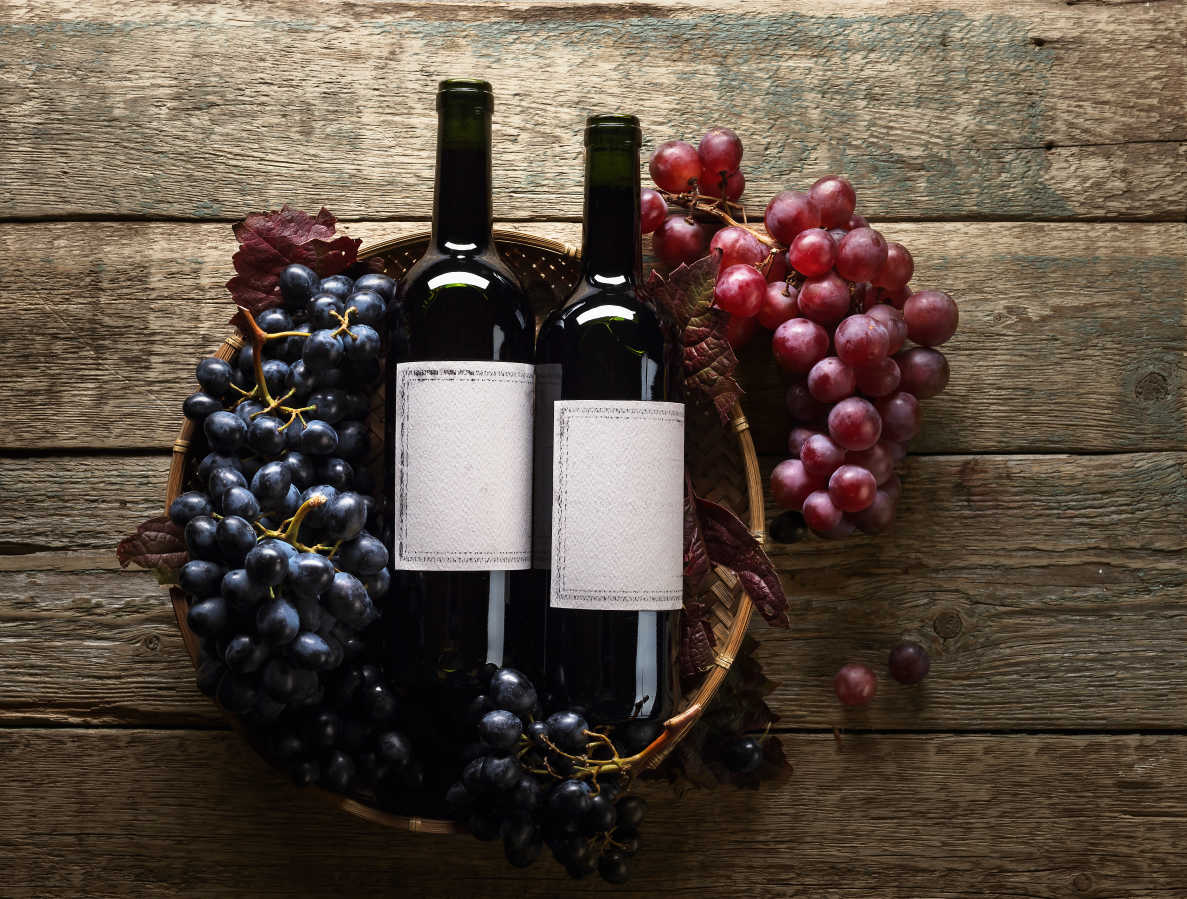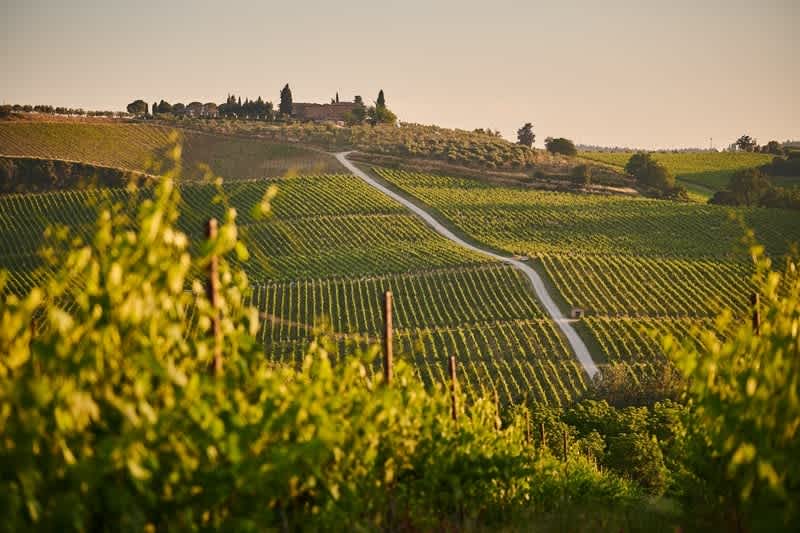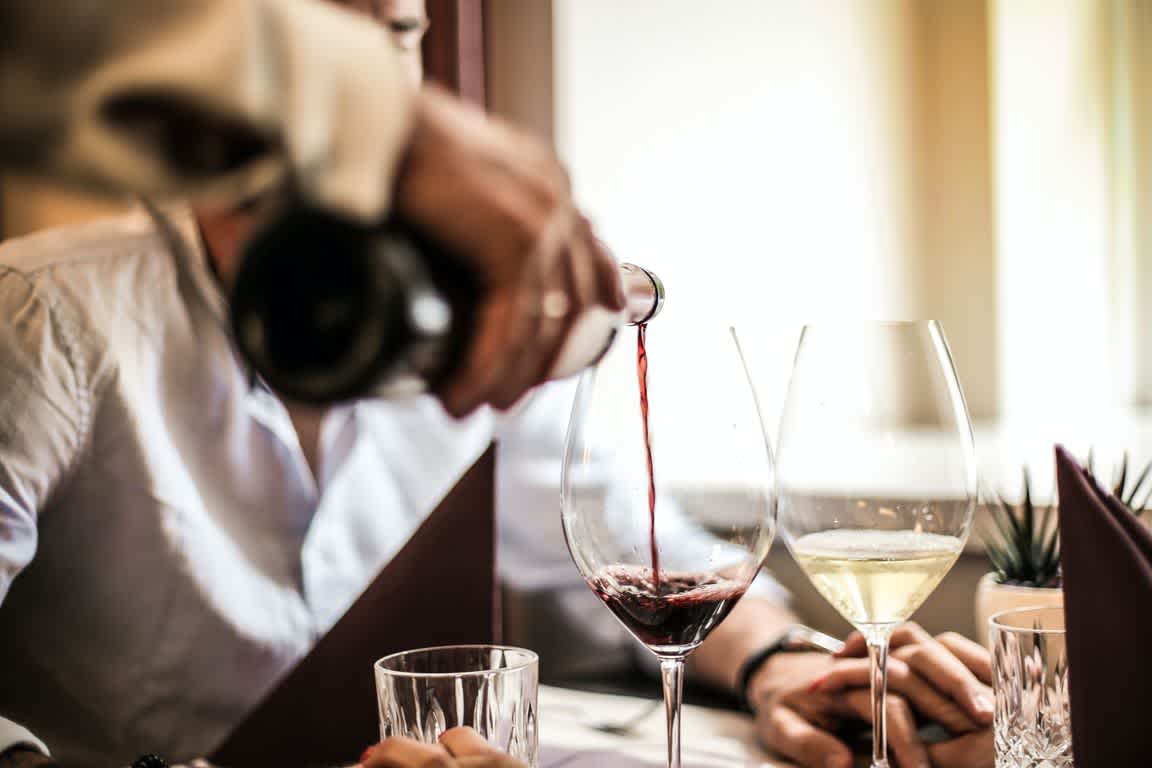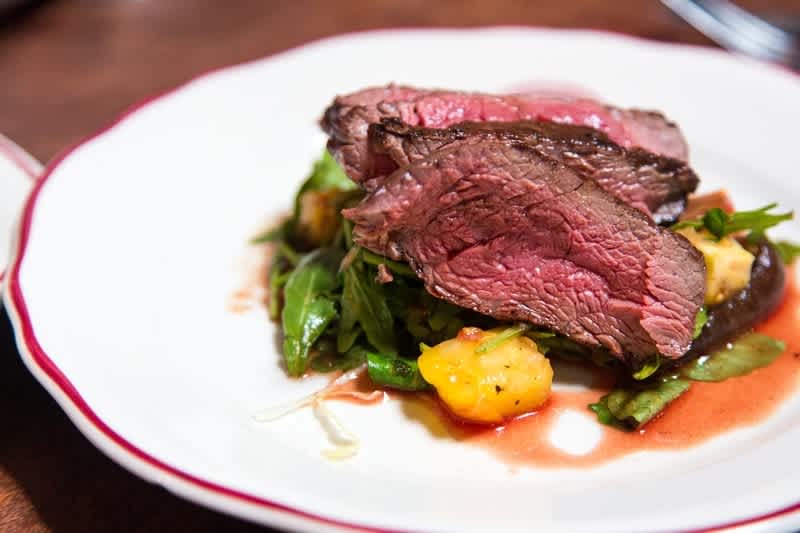Cabernet Sauvignon vs Merlot
Both Merlot and Cabernet grapes are grown in virtually every wine region on earth and, when paired together, complement one another to make beautiful blends.
Cabernet Sauvignon (pronounced cab-er-nay so-vin-yawn) and Merlot (mur * low) are the world’s two most planted grapes varieties and dominate almost every wine store shelf. So, it’s no surprise that many consumers want to know the significant differences between the two.
Both Merlot and Cabernet grapes are grown in virtually every wine region on earth and, when paired together, complement one another to make beautiful blends.
Both Cabernet Sauvignon and Merlot are dry wines that feature dark fruit flavors. Cabernet is darker in color than Merlot and is often considered more complex. That being said, Merlot’s tannins are smoother than young Cabernets, and it has more pronounced fruit flavors. Many consumers perceive Merlot to be sweeter even though it is, technically, a dry wine.
In this article, we will explore the other similarities and differences between the two, as well as the best ways to serve, store, and pair them.
IN THIS ARTICLE:
Bordeaux Wine Blends
It should be noted that both of these grapes are typically used in blends. While varietal wines (wines made using only one grape variety) exist, you will most often find Cabernet Sauvignon and Merlot together (sometimes featuring Cabernet Franc) in what is known as a Bordeaux wine blend.
These blends take the best characteristics of each grape and combine them to make a more elegant wine with finesse and power.
Cabernet dominant Bordeaux wines (typically from the left bank of Bordeaux) can exhibit minerality, violets, mint, lead pencil shavings, cedar, or cigar box flavors, depending on the appellation.
These flavors are sometimes exhibited in New World regions, but as a rule, New World Cabernet Sauvignons are jammier and full of more fruit flavors like black cherry and blackberry.
Cabernet Sauvignon vs Merlot: Grape Breakdown
Cabernet Sauvignon grapes are dark black fruit with notably thick skins (which results in high tannin wines) and high acidity. These can take years to mature from a bold and heavily tannic state to a well-integrated and balanced wine with significant aging potential.
Mistakenly thought to be an ancient grape until the 1990s, it was found that Cabernet Sauvignon was a chance crossing between Cabernet Franc and Sauvignon Blanc in Bordeaux in the 17th century.
Cabernet Sauvignon is a red wine grape with many standard flavors but generally performs incredibly well in blends with other grape varieties. Dependability as a blending grape is one of the significant reasons for Cabernet’s popularity.
Easily cultivated, the Cabernet Sauvignon grape produces naturally concentrated fruit that buds late, protecting it from cold snaps in late spring and bugs in the vineyard that prey upon young vines.
If it is picked too early or is grown in cooler regions, Cabernets can retain green or vegetal characteristics and notes of mint and cedar. Warm areas tend to produce “jammy” wines.
Merlot is a dark blue grape variety known worldwide for its plump fruit that can ripen in almost any climate. Merlot grape berries are so dark that they look black. Its name is even a play on the color and is a diminutive of the French word merle (little blackbird). This international variety also goes by the names Picard and Langon.
Used to make red wine, the big berries and thin skin means that Merlot wines are typically less tannic, more opulent, and ready for drinking long before Cabernet Sauvignon wine.
Merlot is known for its easy ripening and ability to showcase whatever style a winemaker wishes to pursue. It really is a blank canvas for aspiring winemakers, but one of the most pleasing aspects of Merlot wine is the velvety texture. This texture is sought after by fans of the grape, especially in wines made in the “New World” style.
Climates
Cabernet Sauvignon is not as difficult to grow as Pinot Noir but is pickier about soil and climate than the easy going Merlot. The thick-skinned Cab needs warmth to ripen, but too much heat leads to jammy, unsubtle red wines. It finds its most revered and sought-after expressions in Bordeaux, where it is blended with Merlot and Cabernet Franc (and occasionally other grapes) to create distinct wines with immense aging potential and in the robust and heady single-varietal Napa Valley Cabernets.
Some Italian winemakers flout tradition and abandon the strict guidelines for producing Chianti by blending Cabernet with their Sangiovese to mellow the resulting wine. This so-called “Super Tuscan” movement helped reshape Italian wine.
Like Cabernet, Merlot is an international grape and comes in many different styles. “Old World” Merlot (especially Merlot from locations like Saint Émilion and Pomerol on the right bank of Bordeaux) is incredibly complex and takes time to mature. Conversely, “New World” Merlots are often grown in warmer climates which brings out more of the plummy, fruity characteristics. These require little to no aging and are usually ready to drink as soon as you buy them.
The ease of cultivation makes these grapes incredibly farmer-friendly, which, when paired alongside the very high consumer demand, is likely to see these grapes maintain their status of “most planted” grapes on earth.
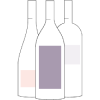
Fun Fact
Chateau Petrus is famous for using 100% Merlot in its Pomerol vineyards
Dominant Variety Characteristics
These wines are truly international and come in many different styles.
For Cabernet, certain flavors and aromas are typical in most wines, particularly blackcurrant (cassis) and green bell pepper. While bell pepper (sometimes called “green” or “vegetal”) isn’t a common note in many wines, that does not make it a fault in Cabernet. The flavor comes from the phenolics in the grape, which decrease as the grape ripens. In cooler vintages and regions, these flavors are more prevalent.
Merlot made in the “International Style” (predominantly New World wines) is harvested late to emphasize bigger, fruitier flavors with a medium to full body. The resulting wines are low in acid and high in alcohol with a soft mouthfeel, velvety tannins, and dark fruit flavors like blackberry, blueberry, black cherry, cassis, and plum.
Old World Merlot (Bordeaux) is picked earlier to showcase a more balanced wine. These wines tend to be higher in acid and have lower alcohol contents that result in a more balanced mouthfeel. They showcase red fruits like raspberry, strawberry, and cherry with the occasional “green” vegetal note.
Serving and Storing Cabernet Sauvignon and Merlot
Serving these wines can be done simply. The wine should be opened and allowed to breathe. Enjoy at a temperature somewhere between cellar and room temperature. If you want to experience the wine through multiple stages, we recommend popping the bottle in the refrigerator for 15 to 30 minutes before serving, but this is all personal preference. Enjoy your wine how you like it.
Once your wine is lightly cooled, it is time to open the bottle. Most likely, you will need a standard corkscrew, but if you have a particularly old bottle of wine, you might prefer to use a two-prong ah-so (sometimes called a butler’s thief) cork puller.
Young Cabernet often needs a bit of aeration to loosen up, while young Merlot does not. If you are drinking an older bottle or one that is particularly complex, you should consider decanting it before serving it in standard wine glasses.
All wine should be stored in a cool place that does not receive direct sunlight, preferably in a wine refrigerator or cellar. Fifty-five degrees Fahrenheit is the median temperature wine should be stored if you wish to age the bottles. What matters most for aging wine is consistency. Do not store your wine in a place that receives direct sunlight, heat, or too much humidity.
Cabernet Sauvignon vs Merlot Wine & Food Pairings
Pairing wine has some general rules, but we think the most important food pairing rule is to drink both of these wines with the food you like. If your Cabernet Sauvignon has bold and assertive tasting notes, it is important to know that it can overwhelm lighter flavors, so we recommend pairing the wine with rich red meat dishes that can stand up to the taste of intense wine.
Merlot is often a bit softer than Cabernet and can be paired with less rich dishes like roast chicken, but it is still a great complement to lamb or steak.

Take Our Wine Quiz
Take our short wine quiz and discover award-winning wines that you'll love.
Get StartedIN THIS ARTICLE
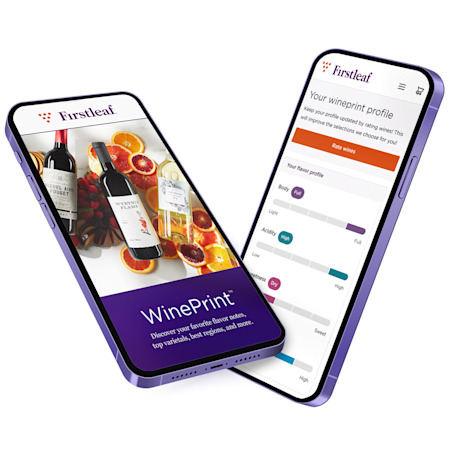
WinePrint™ by Firstleaf
Are you looking to learn more about your wine preferences? Check out our Wine Print for an in-depth look at your personal tasting profile. Discover your favorite wines, varietals, regions, and tasting notes and get personalized recommendations wherever you are.
Learn More